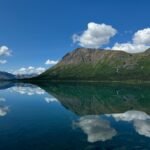
At Katmai NP, bears and volcanoes take centerstage
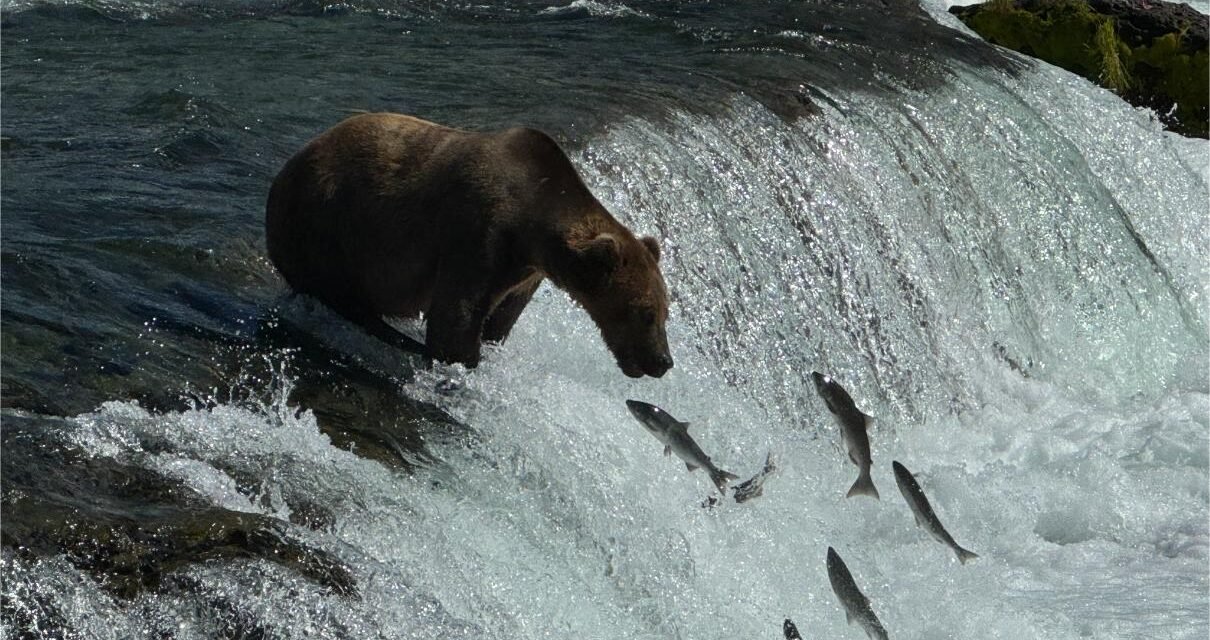
Standing on the platform at Brooks Falls in Alaska’s Katmai National Park, I wanted to warn the salmon and tell them, “Look before you leap!” I lost count as to how many of the fish ended up in the mouth of the ginormous brown bear perched at the edge of the falls. While the other bears stood in the water and actually had to work for their food, this guy just planted himself in the perfect spot, ready to catch salmon after salmon in his massive jaws. It was obvious this wasn’t his first rodeo.
At 3.4 million acres, Katmai National Park is a vast wilderness on the Alaska Peninsula, stretching from the Bristol Bay lowlands to the volcanic center of the Aleutian Range and to the coast of the Pacific Ocean. Known for its plentiful wildlife, dramatic geological features and remoteness, the park is a land of spectacular scenic beauty.
Within this wonderous natural playground are fifteen active volcanoes, making this area one of the world’s most active volcanic locations. These volcanoes are like “pipelines” into the fiery “cauldron,” the Pacific Ring of Fire. One such eruption, Novarupta, that occurred here in June 1812, has the distinction of being the largest of the 20th century. It exploded with cataclysmic force, ejecting enormous quantities of hot pumice and ash, which flowed over the terrain, destroying all life in its path. When the eruptions finally subsided, over forty square miles of once verdant landscape lay buried by volcanic deposits up to 700 feet deep.
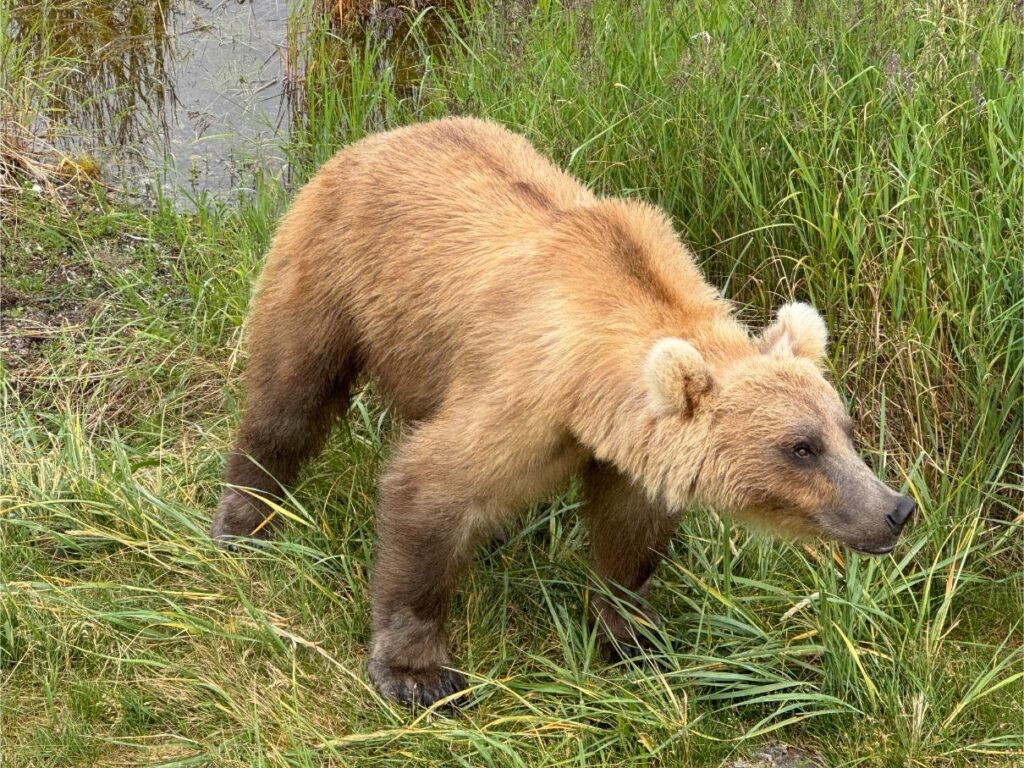
A bear’s sense of smell is excellent! Photo by Debbie Stone
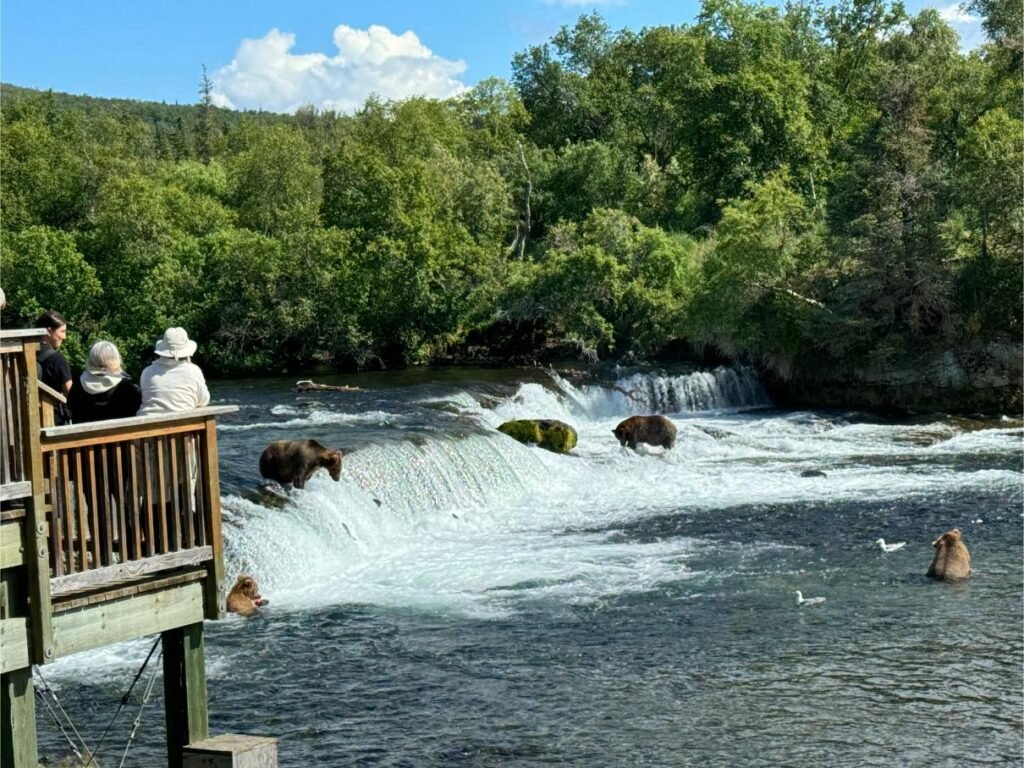
At the Brooks Falls Platform. Photo by Debbie Stone
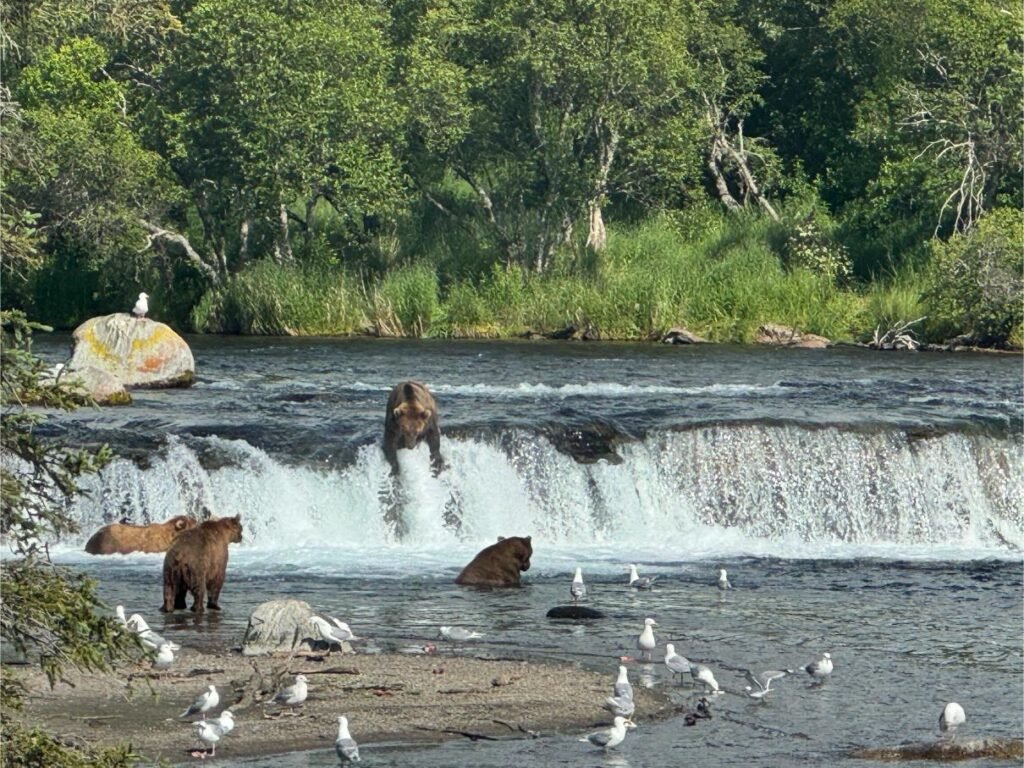
At the falls. Photo by Debbie Stone
Just two eruptions in historic time displaced more volcanic matter than Novarupta. Fortunately, Novarupta resulted in no deaths due to its isolated locale. If it had happened in NYC’s Manhattan Island, people in Chicago would hear it, the fumes would tarnish brass in Denver and acidic raindrops would burn your skin in Toronto. And Manhattan would have zero survivors.
Novarupta eventually fell dormant and four years later, botanist Robert Griggs came to explore the volcano’s aftermath for the National Geographic. He was said to have stared awestruck across the landscape, which was riddled by thousands of steam vents. He named it the Valley of Ten Thousand Smokes.
Today, you can visit the Valley of Ten Thousand Smokes via bus, on a daylong tour from Brooks Camp or take a flightseeing tour, which I did, over the stark landscape. Though most of the fumaroles are gone now, the ash remains and it appears otherworldly. I felt as if I’d been transported to the scene of a sci-fi film.
It was the volcanic activity and the subsequent desire to preserve this place that led to Katmai being declared a national monument in 1918. However, protecting the bears and other varied habitats that call this special landscape home became an equally compelling charge. Flash forward to 1980 when the area was finally designated a national park and preserve.
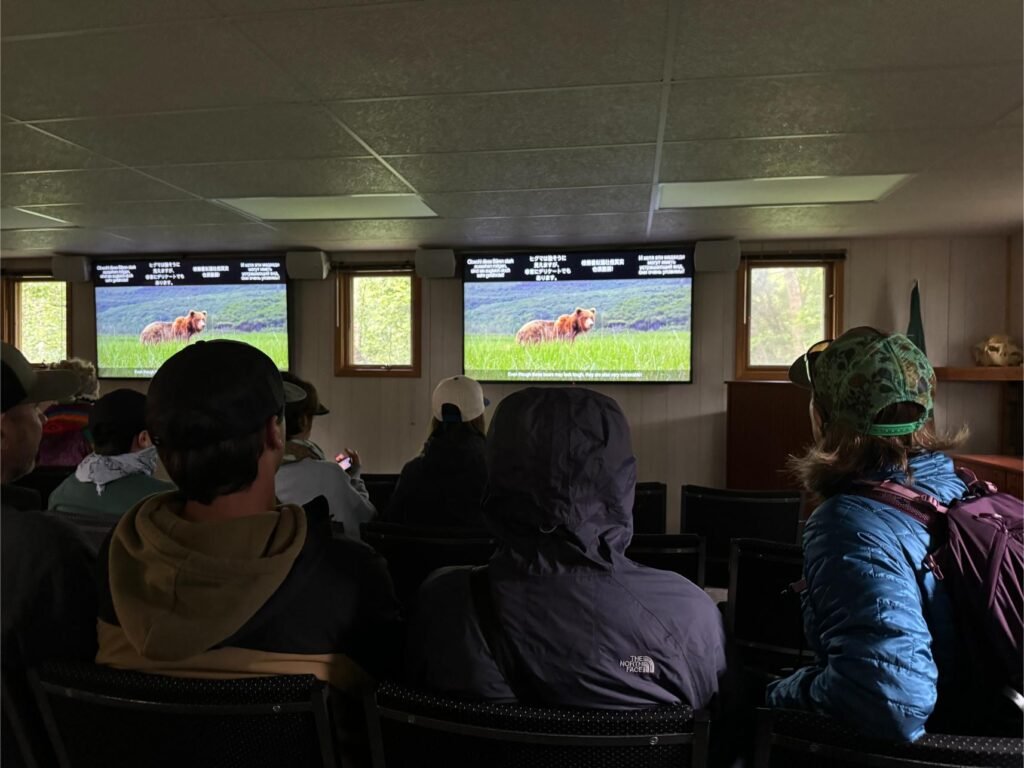
Bear School 101. Photo by Debbie Stone
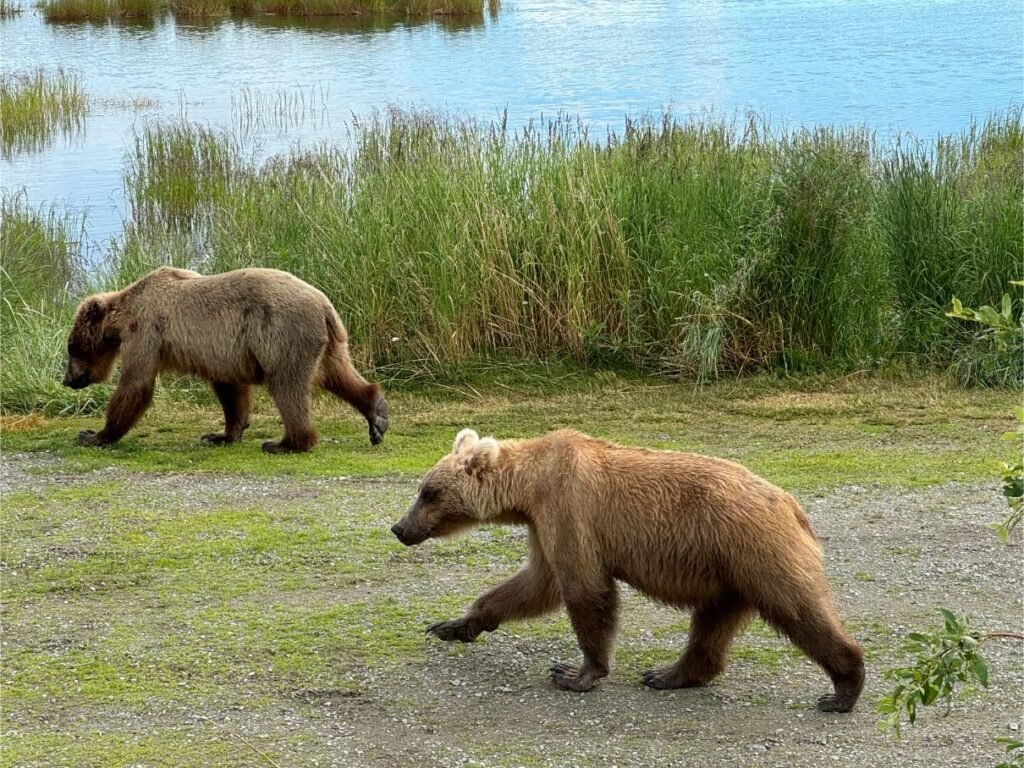
Brown bears are omnivores. Photo by Debbie Stone

Heading to the Valley of Ten Thousand Smokes. Photo by Debbie Stone
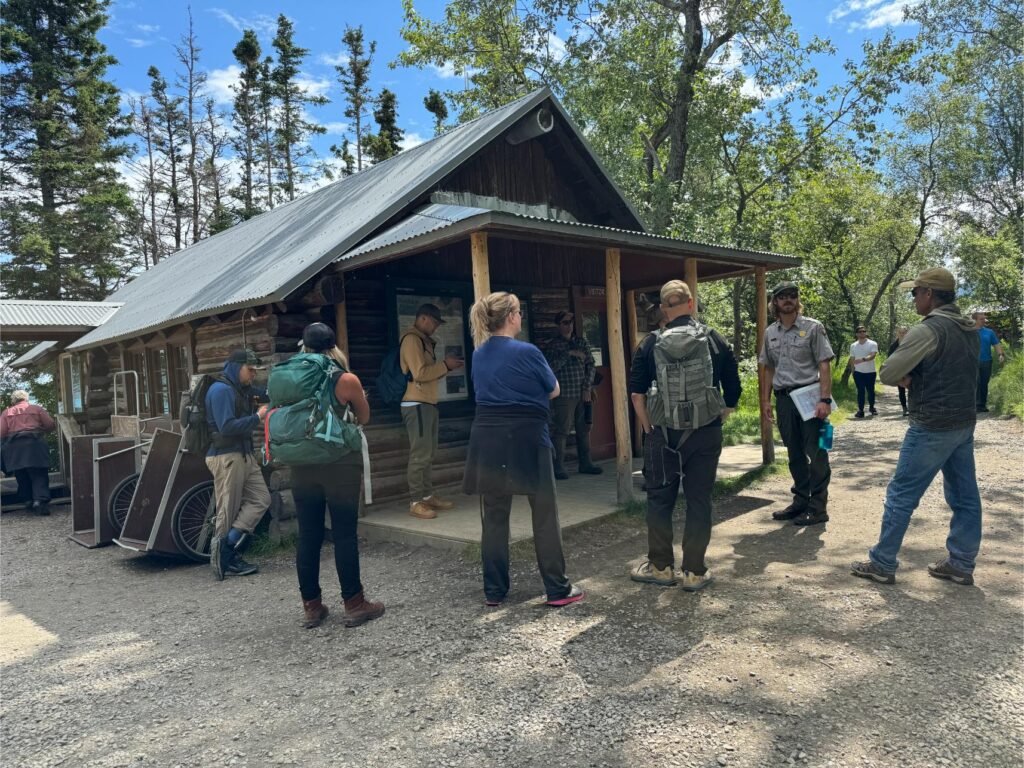
Visitor center. Photo by Debbie Stone
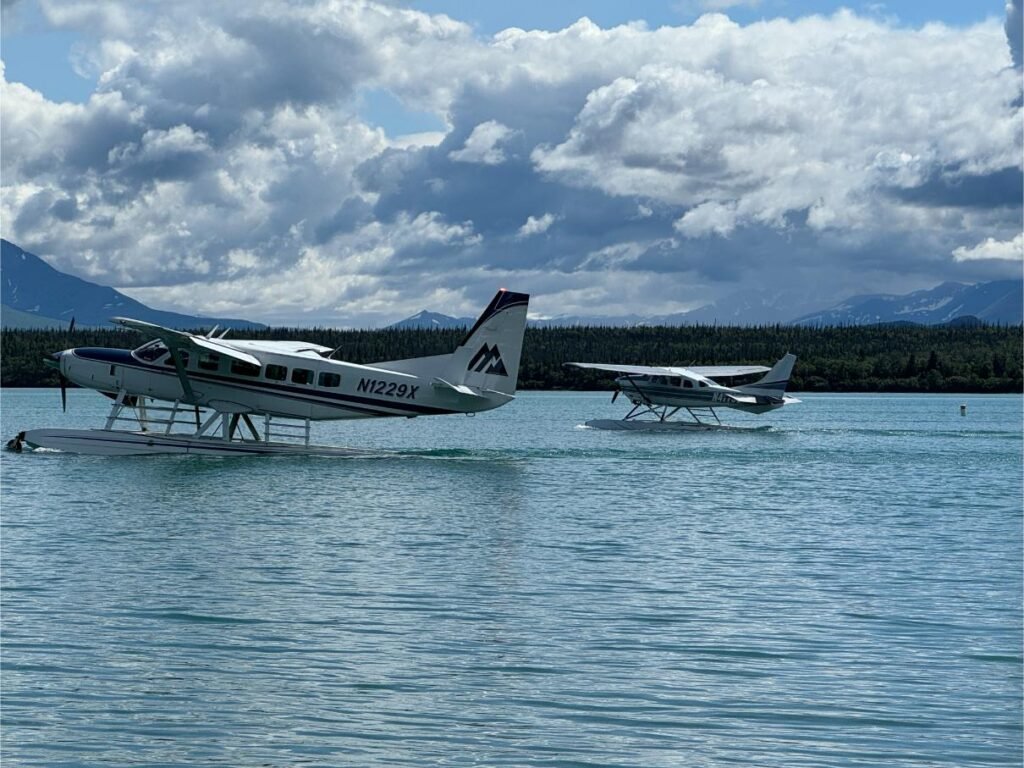
Take a float plane or boat to Katmai as there are no roads. Photo by Debbie Stone
In addition to Katmai’s famous volcanic scene, there are also numerous pristine lakes and rivers with a notable, productive sockeye salmon run. The salmon run begins in late June and by the end of July, a million fish may have entered the system of lakes and rivers. After feeding in the ocean for two to three years, the salmon now average five to seven pounds.
More than 2,000 bears are drawn to these bodies of water to gorge themselves on the fish. The sight of this feasting frenzy is the main attraction for travelers to Katmai, especially mid-summer when the salmon are migrating upriver and the density of bears is often at its peak. Visitors make a beeline for Brooks Camp, one of the most iconic bear-viewing locations in the world.
The only way to reach Katmai National Park and Brooks Camp is via air taxi or water transportation. You can’t drive there, as no roads connect this part of Alaska. As I was staying at Lake Clark Lodge in Lake Clark National Park, I was able to take a float plane to Brooks Camp, roughly fifty miles away. The flight alone is a treat. Even though I’ve been on a number of float plane rides before, it’s always a special experience. The bird’s eye view of the landscape never fails to mesmerize.
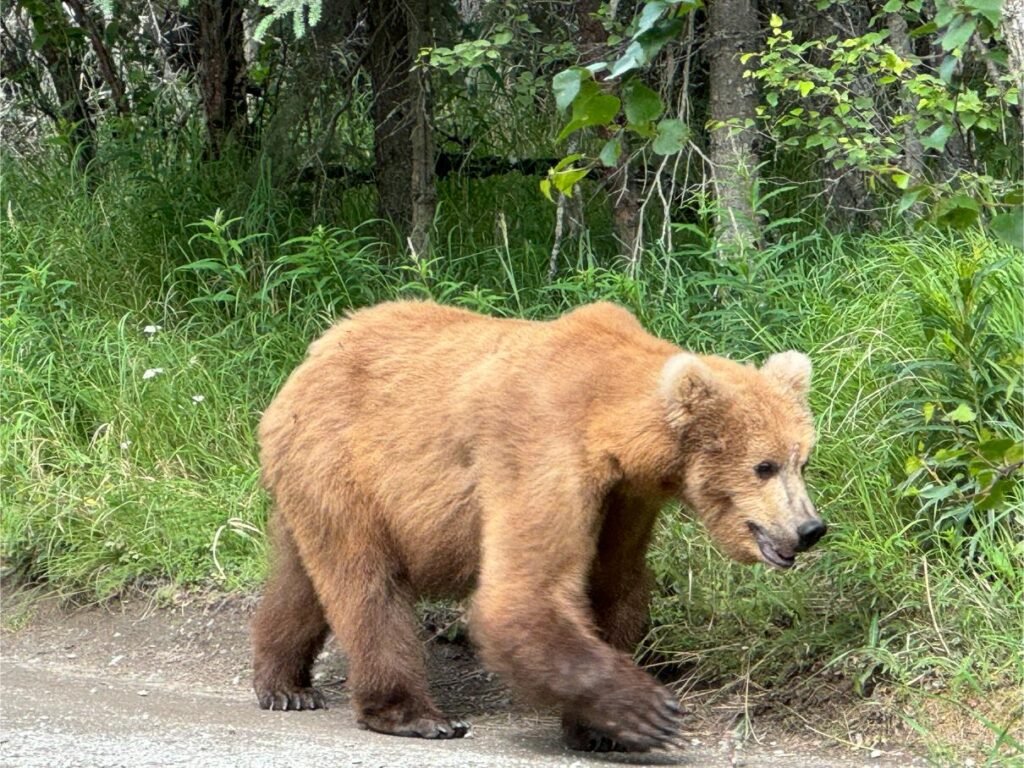
Give him space! Photo by Debbie Stone
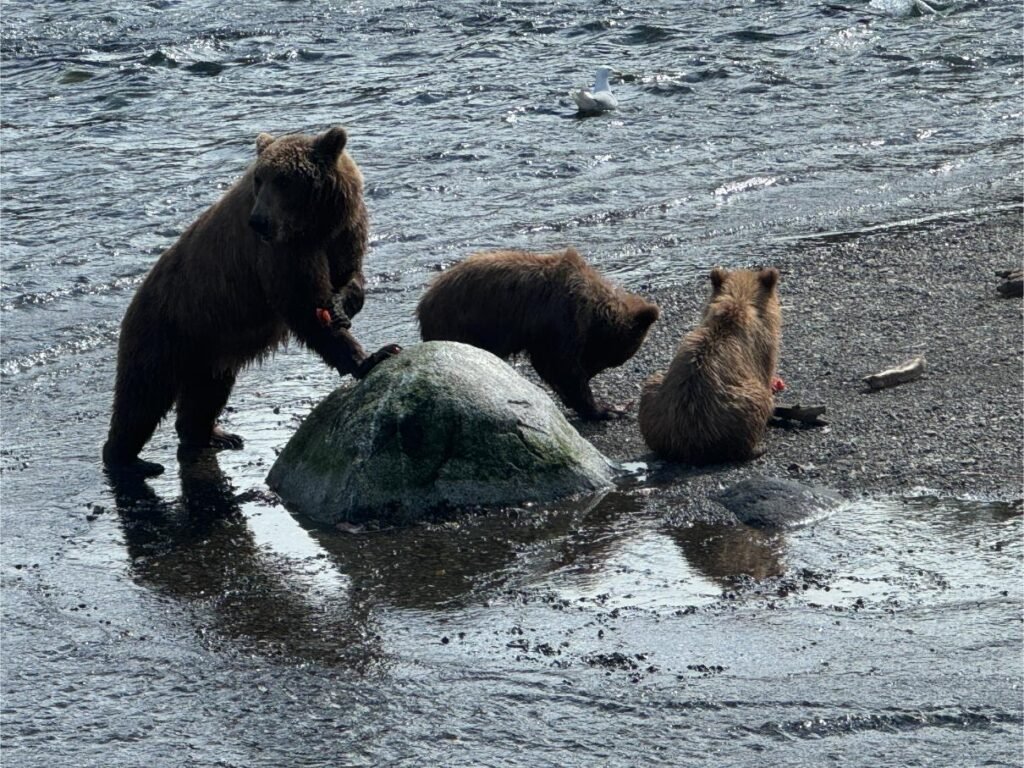
Sow and cubs. Photo by Debbie Stone
Once you arrive at Brooks, you’ll walk over to the Katmai NPS Visitor Center and attend Bear School 101. This orientation is mandatory for every visitor, as bear safety is paramount at Brooks. You’ll first watch a short video, followed by a chat with a ranger.
During the presentation, you’ll hear that the bears around the Brooks Camp area are often described as “habituated.” This means they’re accustomed to human presence and show little response when seeing people on the trails or at dedicated viewing platforms. The ranger will tell you that in no way this means they are tame or friendly. The bears are wild animals that may behave unpredictably and can be dangerous.
The ranger will stress the importance of managing your food and possessions, staying alert at all times and remaining calm when you see a bear, whether on a trail, along the beach, in the river or in camp. Travel with others, make noise to avoid surprising them and give them space. Most importantly, do not run because this can trigger a predatory response and you can’t outrun a bear. At top speeds this animal can reach 35 mph!
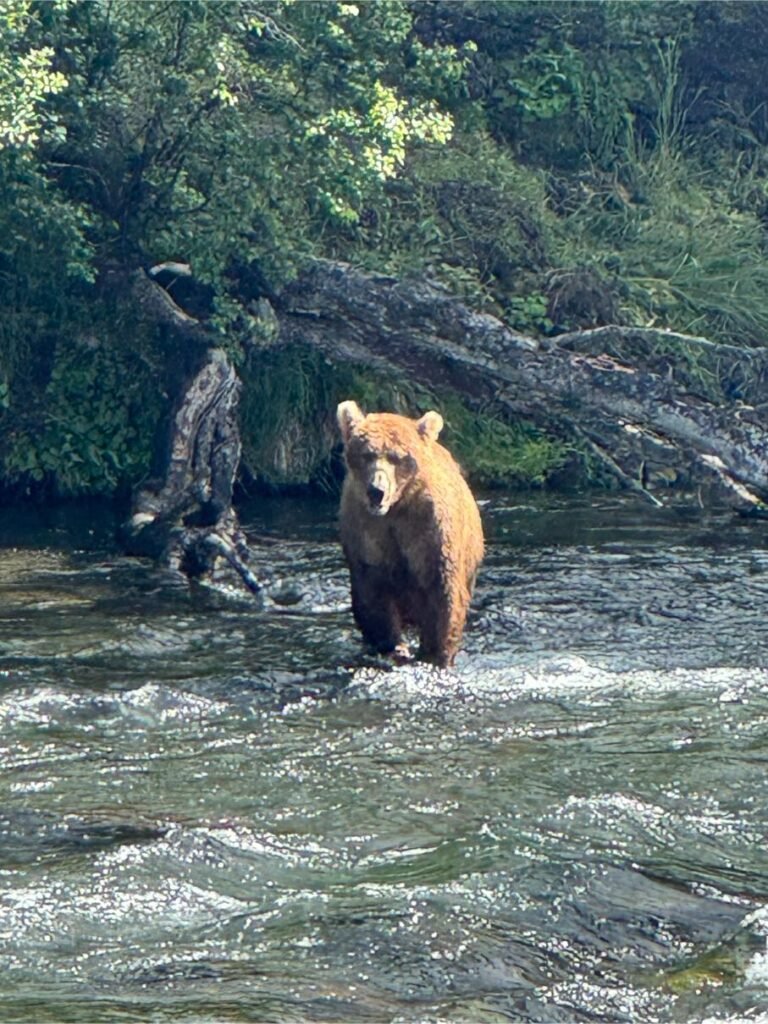
Here I come! Photo by Debbie Stone
These creatures are busy packing away calories and just trying to survive from year to year, and it’s essential to ensure that people limit their impact on them as much as possible.
The elevated platforms are ideal places to observe the bears. They offer secure and unobtrusive vantage points to witness the all-you-can-catch salmon buffet. The Riffles Platform, located 100 yards downstream of Brooks Falls, is in front of a series of shallow rapids (riffles) and is a great place to see sows with cubs and other bears looking to avoid competition from the more dominant bears at the falls. This platform is not limited to number of people or time.

The Valley of Ten Thousand Smokes is a stark landscape. Photo by Debbie Stone
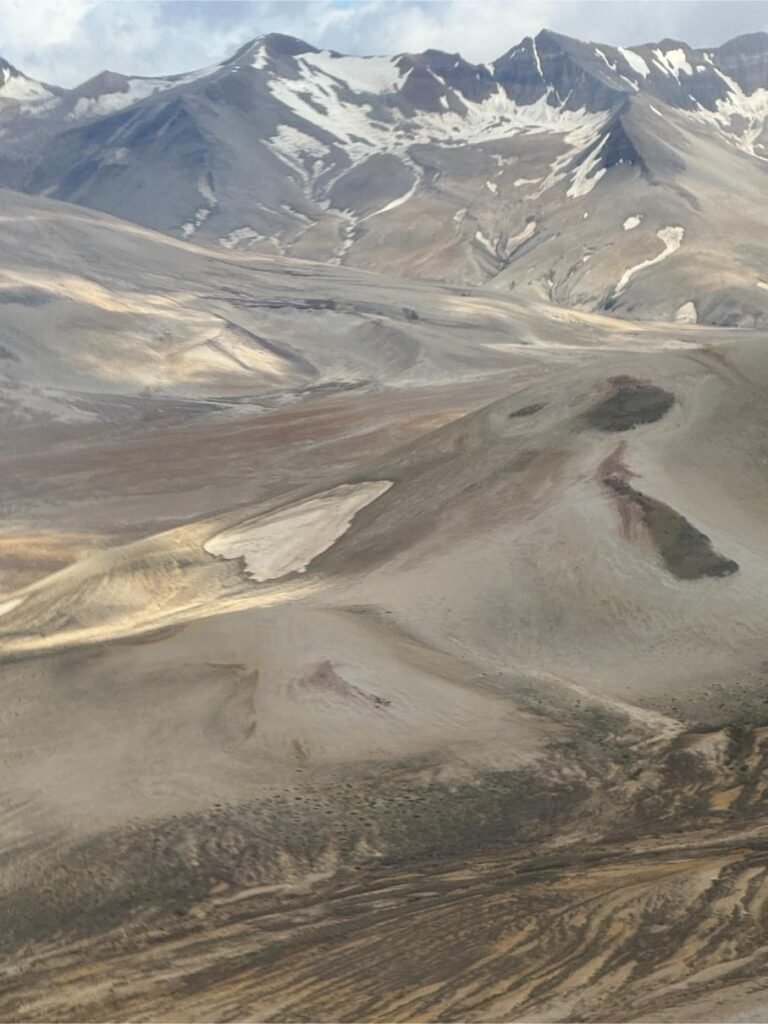
Valley of Ten Thousand Smokes. Photo by Debbie Stone
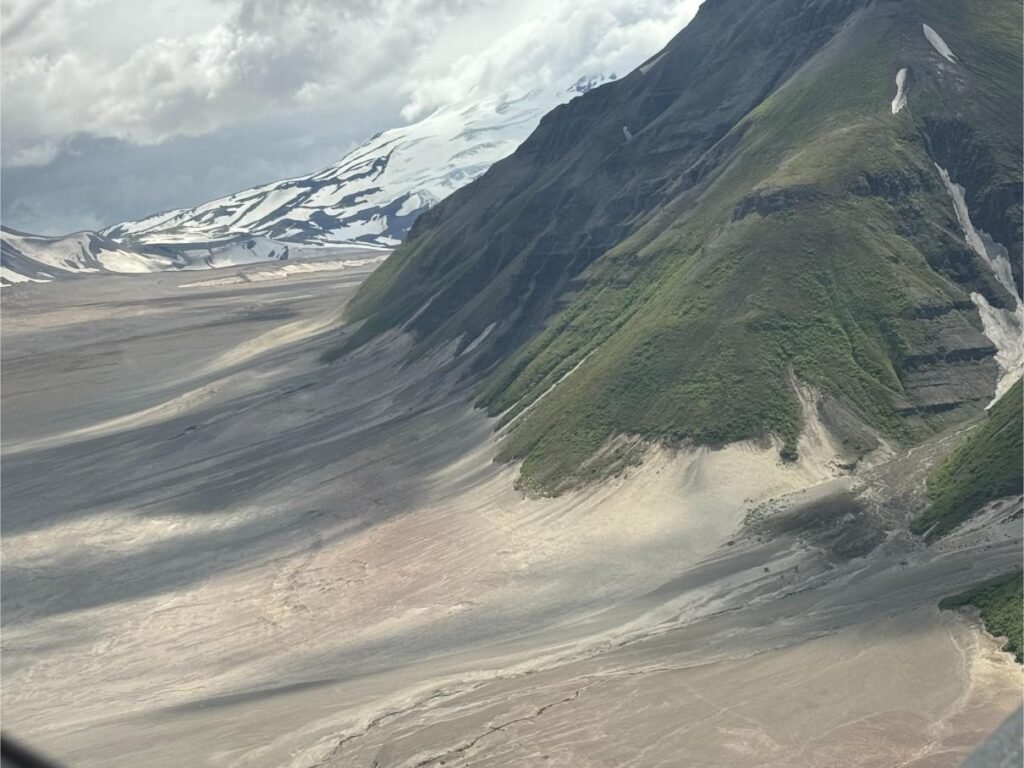
Valley of Ten Thousand Smokes. Photo by Debbie Stone
The Brooks Falls Platform with its two elevated levels is the spot that wildlife aficionados and photographers dream of, as it offers prime viewing opportunities. The waterfall presents a natural obstacle for the salmon, which means that many of the bears are gathered in a relatively small area.
In high season, when the crowds are intense, the Brooks Falls Platform is strictly regulated by the rangers, allowing a max of forty people at one time with a limit of a twenty to thirty minute stay. After this period, you are asked to leave the platform so others can take their turn. Know that if you come during the peak, you’ll have to put your name on a waiting list and often the wait may be over an hour. This is when it’s optimal to hang out at the Riffles Platform.
There’s plenty of info about the bears on various panels at Brooks. You may not be aware that brown bears and grizzlies are technically the same species, but brown bears refer to coastal bears that feed primarily on salmon, whereas inland brown bears are called grizzlies. These animals have a pronounced hump between their shoulders, long claws and a dish-shaped profile, and can weigh between 700-1,000 pounds as adults.
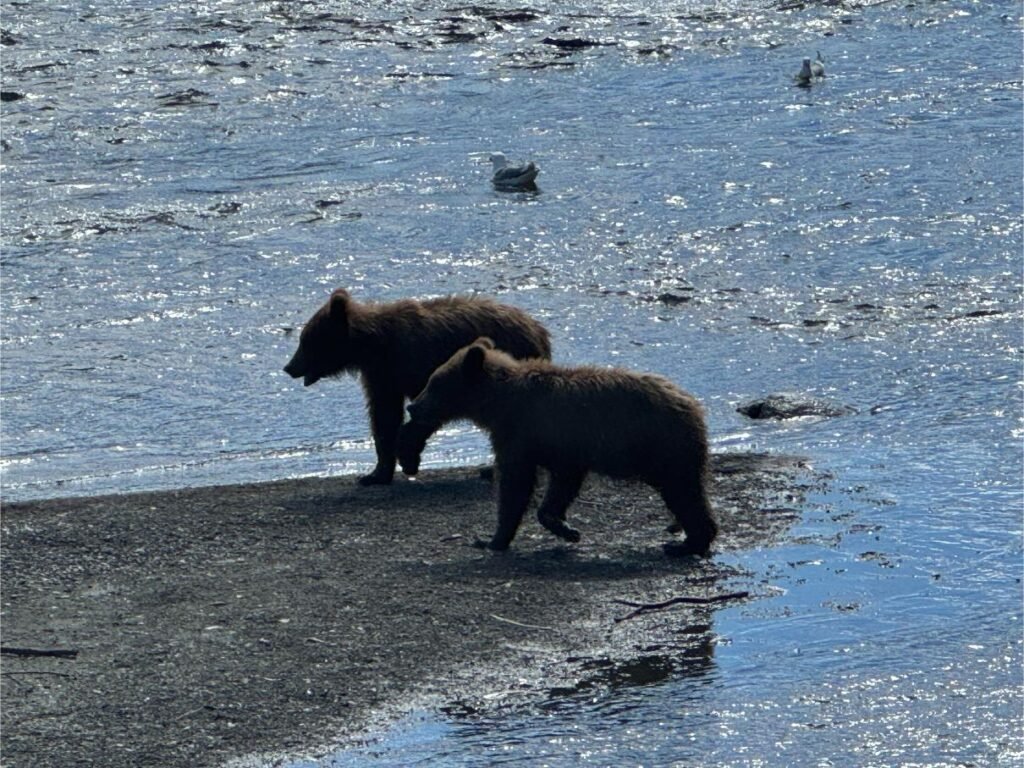
You can be assured that mom is nearby. Photo by Debbie Stone

He has the ideal spot. Photo by Debbie Stone
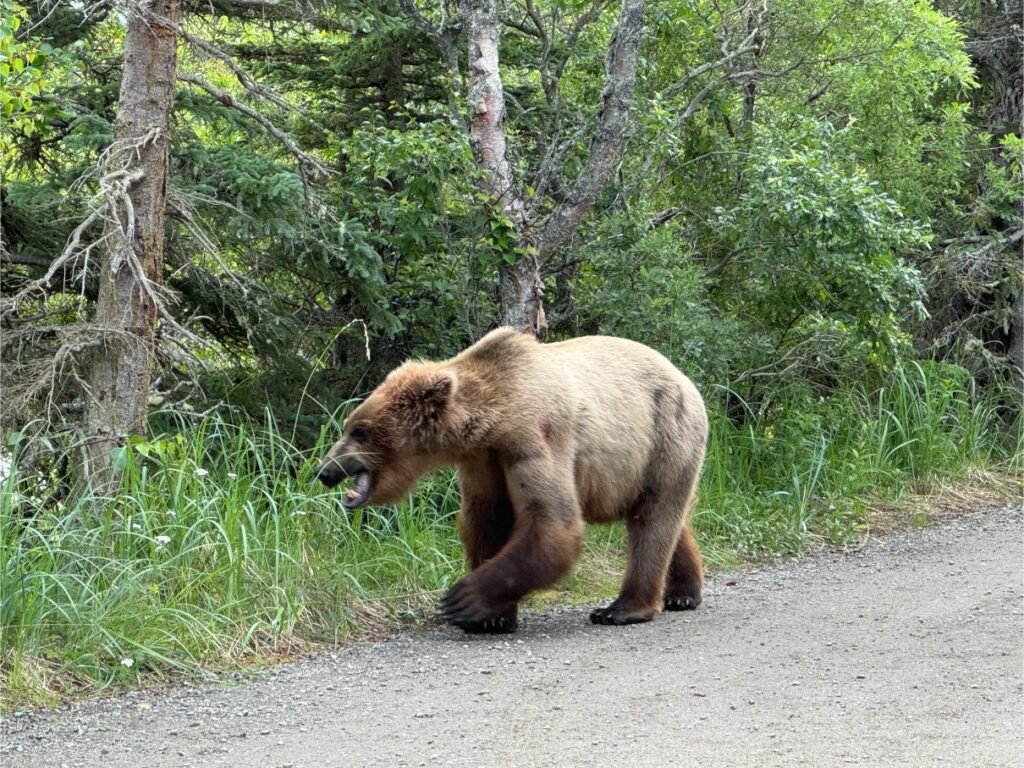
Note the distinctive hump on its back. Photo by Debbie Stone
The creatures are mostly loners for much of the year, but when the salmon are running, they come together in throngs and compete for fishing places that match their experience and skill. Dominance determines who gets the prime location and it’s most often the large males that control the best spots. They will signal their supremacy by lunging at other bears or directly approaching them in a menacing way.
As previously mentioned, I watched the one alpha male at the lip of the falls use the stand-and-wait method of fishing. Jaws agape, he snapped at the leaping salmon, yielding plenty of results with little energy expanded.
Some bears I saw used the dash-and-grab technique, while others dove into the water to get the fish. Snorkeling is yet another practice. This is when the bear submerges his eyes and muzzles in the water to search for salmon, but keeps his ears above to listen for the possible threat of other approaching bears.
Mothers and their young were also present and I noted they fished the riffles downstream where the fishing was more challenging, but offered a safer situation. It’s a fact that older bears sometimes kill and eat the younger ones. Sows are vigilant to the danger and stay alert while teaching their cubs fishing techniques necessary for life.
Those visitors wishing to fish or simply stand in Brooks River (waders are necessary!), are able to do so, but must keep a safe distance from any bears in the vicinity. And they need to get out of the water if bears start to head in their direction.
Spending time observing the bears was a memorable highlight of my Alaska trip and well worth the expense and effort involved in getting to Katmai. I could have remained on the platforms for hours, enthralled by the behavior, habits and interactions of these beautiful and powerful creatures.
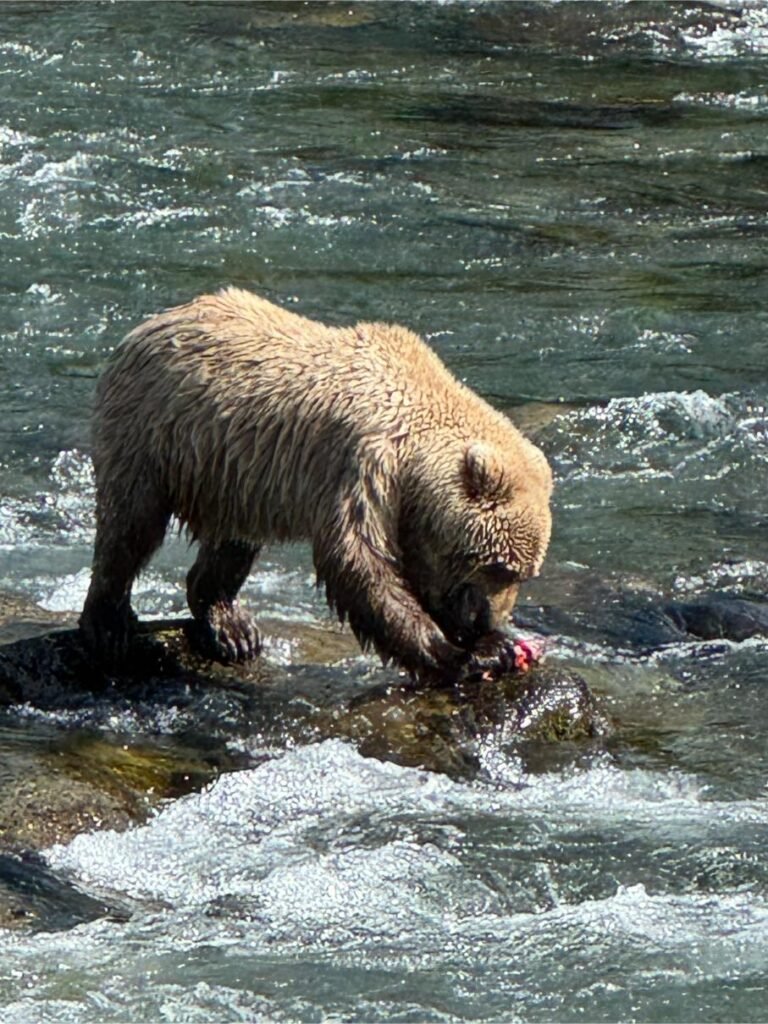
Success! Photo by Debbie Stone
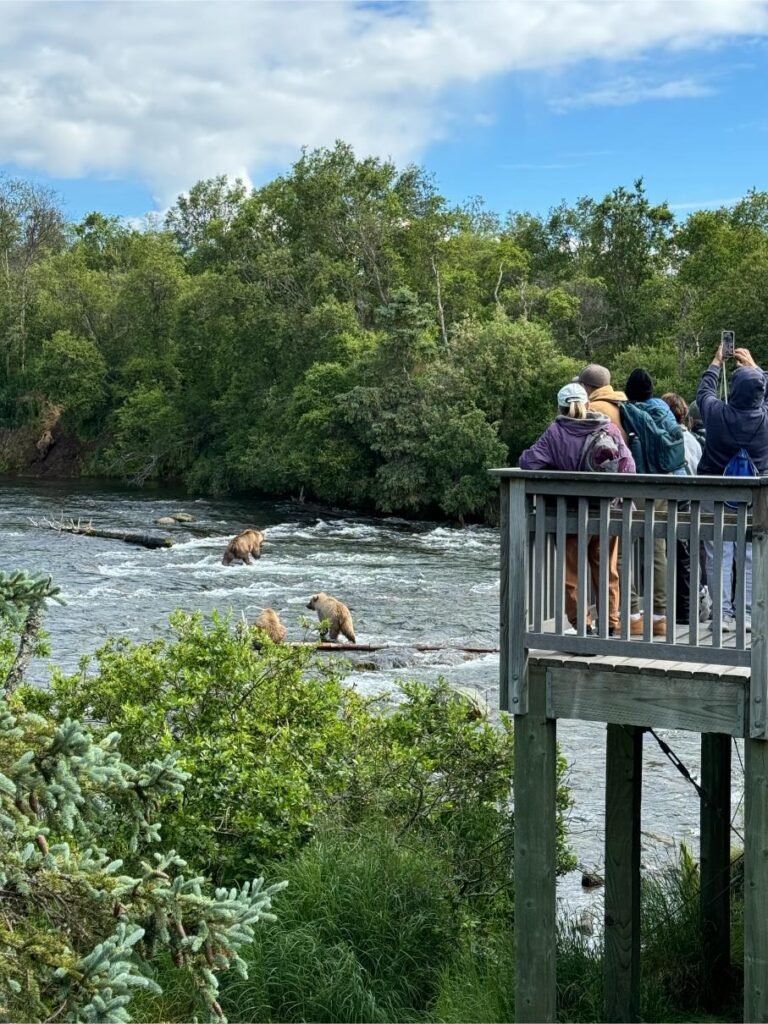
At the Riffles Platform. Photo by Debbie Stone
Discover more from Luxe Beat Magazine
Subscribe to get the latest posts sent to your email.



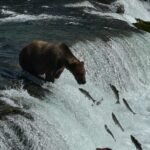
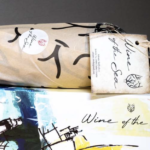




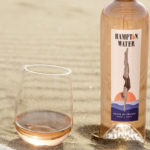

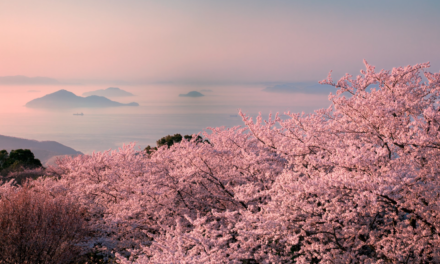
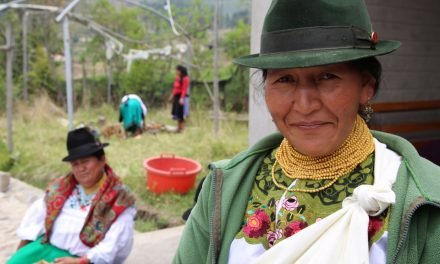
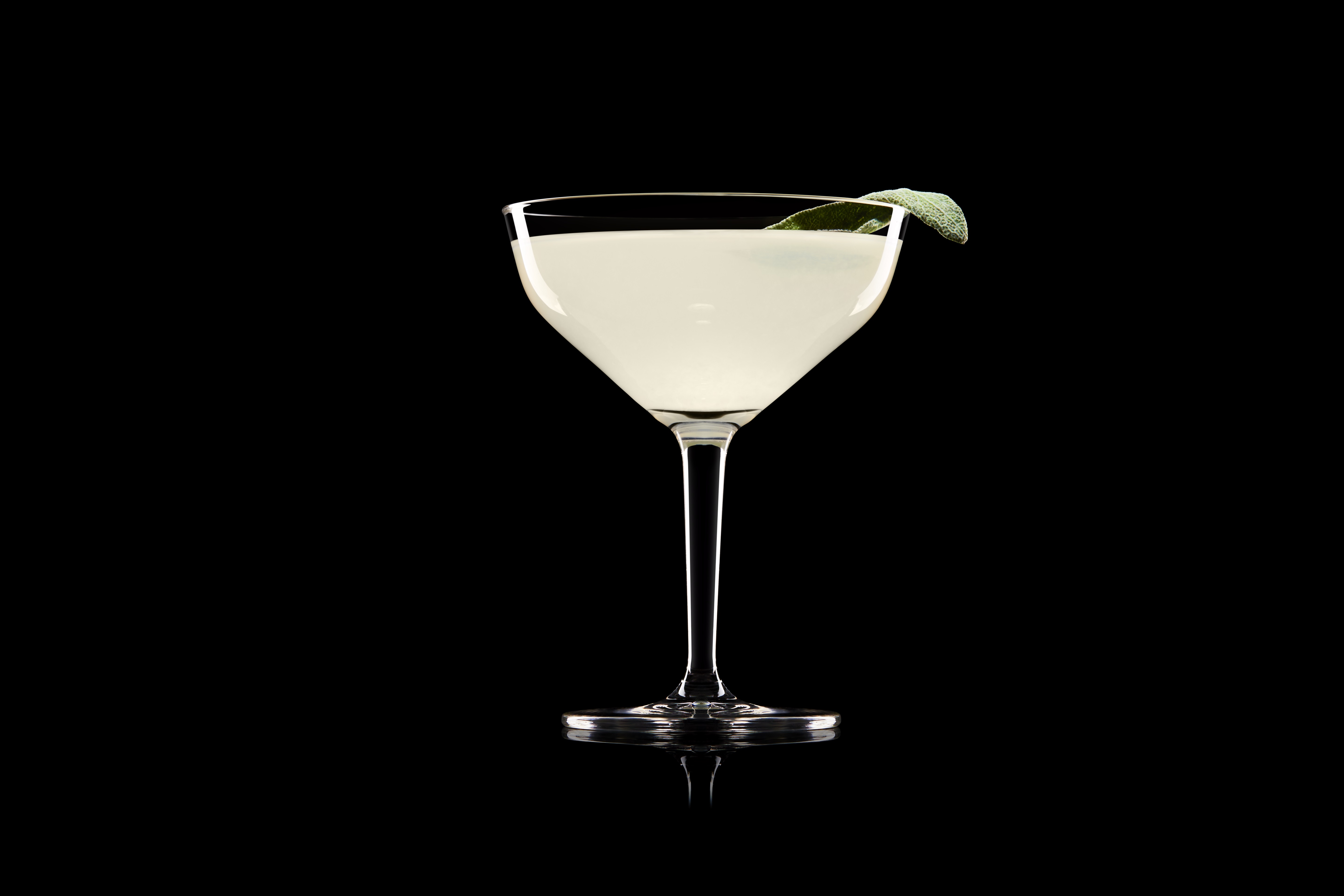

You must be logged in to post a comment.